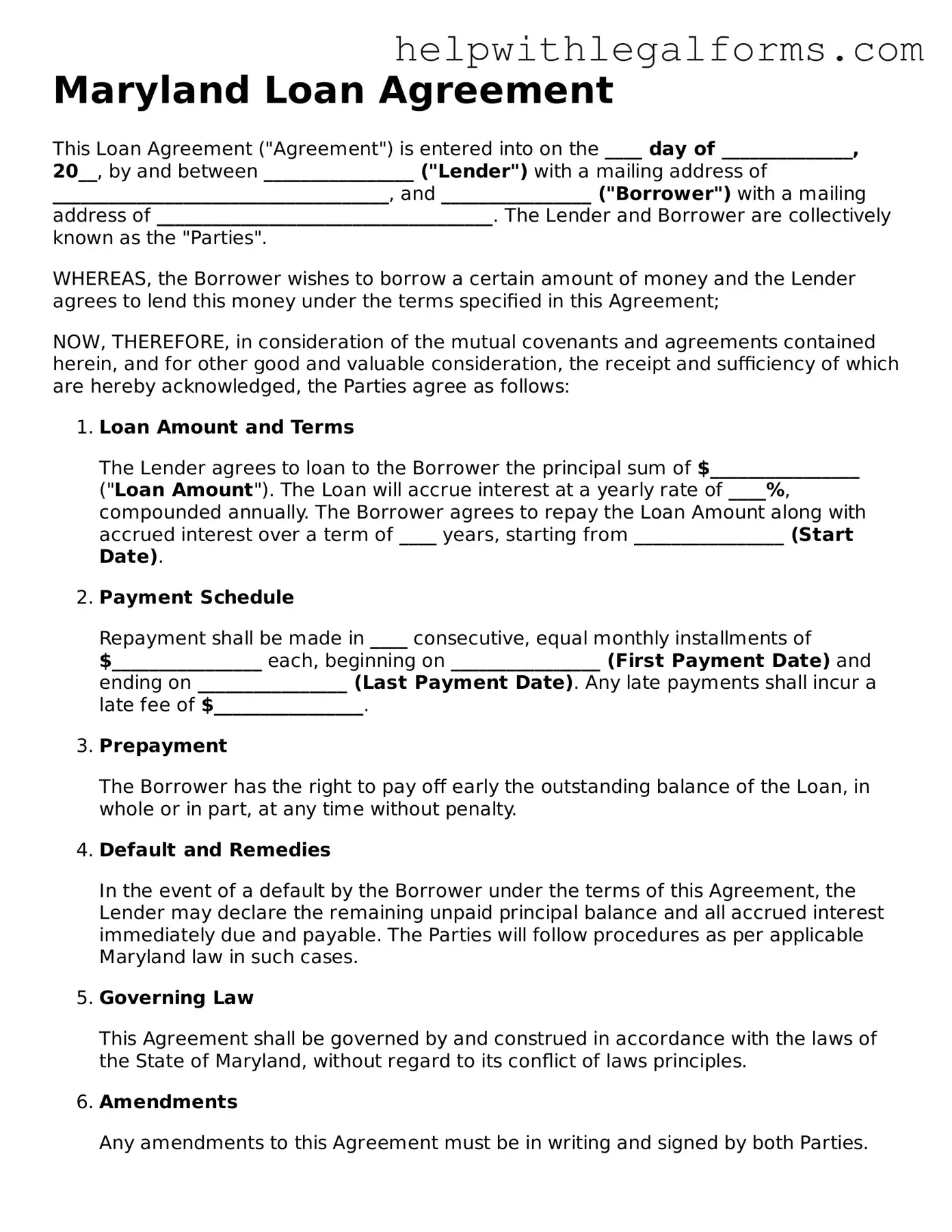What is a Maryland Loan Agreement?
A Maryland Loan Agreement is a legally binding document between a borrower and a lender. It outlines the loan amount, interest rate, repayment schedule, and other terms specific to the loan. This agreement serves to protect both the borrower's and the lender's interests under Maryland state laws.
Who needs to sign the Maryland Loan Agreement?
The parties involved in the loan—namely, the borrower and the lender—must sign the Maryland Loan Agreement. Depending on the loan's complexity and amount, witnesses or a notary public might also be required to sign, ensuring the agreement’s validity and enforceability.
Is a Maryland Loan Agreement only for business loans?
Not at all. A Maryland Loan Agreement can be used for various loans, including personal loans, business loans, mortgage loans, and auto loans. The agreement's terms can be customized to fit the specific purpose and needs of the loan.
How can I customize the loan terms in the Maryland Loan Agreement?
The loan terms, including the loan amount, interest rate, repayment schedule, and collateral (if any), can be tailored to match the agreement between the borrower and lender. It is advisable to clearly define all terms in the agreement to prevent any future disputes.
Are oral agreements recognized in Maryland for loan agreements?
While oral agreements can be legally binding, proving the terms and existence of an oral agreement can be extremely challenging. For this reason, it is highly recommended to have a written Maryland Loan Agreement for any loan to ensure clarity and enforceability under Maryland law.
What happens if a borrower defaults on a loan under a Maryland Loan Agreement?
If a borrower defaults on a loan, the specific remedies available to the lender will be outlined in the loan agreement. These could include demanding immediate payment of the entire outstanding balance, taking possession of collateral, or pursuing legal action to enforce the agreement.
Can the terms of a Maryland Loan Agreement be changed after signing?
Yes, the terms of a Maryland Loan Agreement can be amended, but any changes must be agreed upon by both the borrower and the lender. The amendment should be in writing and duly signed by both parties to maintain its validity and enforceability.
Is it necessary to have a lawyer review a Maryland Loan Agreement?
While not always required, having a lawyer review your Maryland Loan Agreement can provide added security. A lawyer can help ensure that the agreement complies with all state laws and fully protects your rights and interests.
What documents should accompany a Maryland Loan Agreement?
Supporting documents may include loan application forms, credit reports, collateral documentation, and any other agreements related to the loan (e.g., mortgage documents for real estate loans). The exact documents required will depend on the loan’s nature and terms.
How does a Maryland Loan Agreement impact my credit score?
While the agreement itself does not directly affect your credit score, your compliance with its terms will. Prompt payments can positively impact your credit score, while late payments or defaulting on the loan can negatively affect it. Both borrowers and lenders should consider how the agreement and its fulfillment interact with credit reporting practices.
